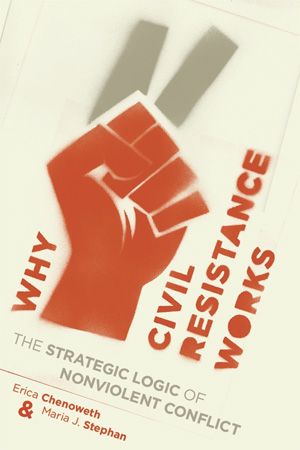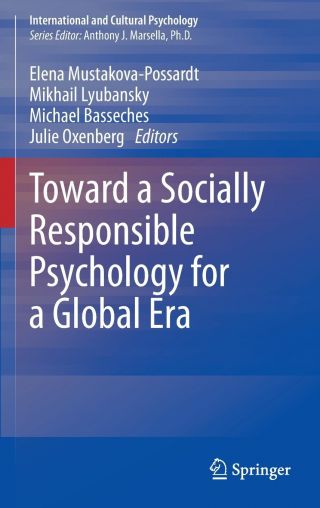Conscientiousness
Is Nonviolence Effective?
Evidence is mounting that it may be more effective than the alternatives.
Posted March 13, 2014
One of the great debates among social scientists has been whether nonviolence is effective, particularly at the level of large groups and nation states. Perhaps since the dawn of civilization, the nearly unanimous consensus has been that nonviolence is a wonderful ideal, but that if one wants to achieve results, violence is the means to choose. Nonviolence, it is said, is the weapon of the weak, to be employed only when violent options seem totally out of reach. Advocates of nonviolence have responded in two ways: 1) challenging the notion of ineffective outcomes and 2) challenging the appropriateness of using effectiveness as the primary criterion for evaluating the strategy of nonviolence.

From a social science perspective, evidence has been mounting over the last century that nonviolence may, in fact, be more effective than violence. Aldous Huxley made this argument as early as 1937 in his book Ends and Means. Gene Sharp and his associates amassed hundreds of historical examples of effective nonviolent action against authority and have, as noted previously, laid out a theoretical explanation for the effectiveness of nonviolent resistance. For a more popular audience, Peter Ackerman and Jack Duvall (2000) documented the history of Twentieth Century Nonviolence in a PBS series and accompanying book, entitled A Force More Powerful. Their subsequent DVD, Bringing Down a Dictator, tells the story of the overthrow of Serbian dictator Slobodan Milosevic, by a nonviolent campaign led by the group “Otpor![i]” many of whose leaders had been trained in Gene Sharp’s techniques.

Perhaps the most convincing study to date is that of Chenoweth and Stephan (2011), who assembled a comprehensive data set of 323 violent and nonviolent campaigns between 1900 and 2006. They found that nonviolent campaigns were nearly twice as likely to achieve full or partial success as were violent campaigns and that the advantage for nonviolent campaigns held even when controlling for the authoritarianism of the regime. Nonviolent campaigns turned out to be more effective for both regime change and resistance to foreign occupation. The only purpose for which nonviolent campaigns were not more successful than violent ones was political secession (notably, the secession analysis included only four nonviolent campaigns). Chenoweth and Stephan concluded that nonviolent campaigns were more successful because the costs of participating in them were lower than for violent campaigns (e.g., taking up arms or supporting rebels), and, therefore, participation was higher and from a broader range of people, leading to more diverse strategies. They also concluded that defections from the regime were more likely in the face of nonviolent campaigns because of regime participants’ perceptions that they would be more likely to be welcomed and less likely to be subject to reprisals in nonviolent campaigns. Notably, they conclude from their data that “nonviolent campaigns succeed against democracies and nondemocracies, weak and powerful opponents, conciliatory and repressive regimes. Thus, conditions shape—but do not predetermine—the capacity for a nonviolent resistance to adapt and gain advantage under even the direst of circumstances” (p. 221).
A second response to the question of effectiveness, common among nonviolence advocates with a spiritual perspective, is to challenge the very notion of effectiveness as rooted in an industrial mindset. The very notion of effectiveness is seen as a sort of hubris. Opposed to effectiveness is the idea of fruitfulness, drawn from an agricultural metaphor. Here, one’s duty is not to “be effective,” but to be faithful, to plant seeds. How those seeds may develop is largely outside of one’s control—in God’s hands, many would say.
A common illustration of fruitfulness is the story of Franz Jagerstatter, an Austrian peasant who was imprisoned and eventually executed for refusing induction into Hitler’s army during World War II. His efforts were utterly ineffective—he did not save a single victim of the Nazis. His story would have been utterly forgotten had it not been for Gordon Zahn, an American WWII conscientious objector turned sociologist, who chanced upon it while doing research for another book. Zahn published a biography of Jagerstatter, entitled In Solitary Witness in 1964. The book eventually came into the hands of Daniel Ellsberg, influencing him to release what became known as The Pentagon Papers. Thus, a nonviolent action which had no discernible effect at the time it was performed played a role in shaping the course of the Vietnam War two decades later.
Another example, which combines effectiveness and fruitfulness, is the story of Le Chambon, a primarily Huguenot village in Vichy France, which, under the leadership of pastor Andre Trocme and his wife Magda, sheltered hundreds of Jewish refugees under the eyes of the Vichy police and later the Nazis. They were effective in saving hundreds of lives, but they were also fruitful. As the story became known, largely through Philip Hallie’s book Lest Innocent Blood Be Shed (1979), their example inspired many faith communities during the 1980s to shelter Central American refugees who were being deported (sometimes resulting in their death) by the Reagan Administration’s Immigration and Naturalization Service (Davidson 1998; Golden and McConnell 1986).
Thus, nonviolence has been shown to be more effective than violence in overthrowing repressive regimes and in resisting foreign occupation. Perhaps more importantly, it has the potential to be fruitful over the long term. But what does nonviolence actually look like, what kind of impact might it achieve, and what role might psychologists play in nonviolent actions and movements? Read the full chapter titled "Toward a Psychology of Nonviolence" in Toward a Socially Responsible Psychology for a Global Era, published by Springer Press.
[i] Serbian Cyrillic: Отпор! The English translation is Resistance!
This post is an excerpt from a chapter titled Toward a Psychology of Nonviolence in Toward a Socially Responsible Psychology for a Global Era, written by Harry Murray, Mikhail Lyubansky, Kit Miller, and Lilyana Ortega, published by Springer Press.

This post is an excerpt from a chapter titled Toward a Psychology of Nonviolence in Toward a Socially Responsible Psychology for a Global Era, written by Harry Murray, Mikhail Lyubansky, Kit Miller, and Lilyana Ortega, published by Springer Press.
__________________________________________
For more racial analysis of news and popular culture, join the | Between The Lines | Facebook page and follow Mikhail on Twitter.
This work is licensed under a Creative Commons Attribution-NoDerivs 3.0 Unported License.




